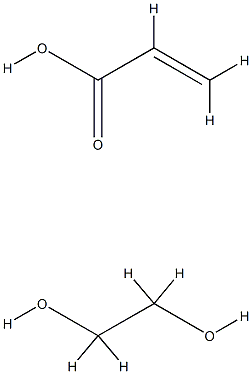Diethylene glycol dimethacrylate
Synonym(s):2,2′-Oxybisethanol dimethacrylate;2,2′-Oxydiethyl dimethacrylate;Diethylene glycol, dimethacrylate
- CAS NO.:2358-84-1
- Empirical Formula: C12H18O5
- Molecular Weight: 242.27
- MDL number: MFCD00014931
- EINECS: 219-099-9
- SAFETY DATA SHEET (SDS)
- Update Date: 2024-12-18 14:15:32

What is Diethylene glycol dimethacrylate?
Chemical properties
Clear Colourless Oil
The Uses of Diethylene glycol dimethacrylate
Esters of acrylic acid and methacrylic acid, more commonly known as acrylates and methacrylates are key raw materials in the coatings and printing industry, and in food packaging.
The Uses of Diethylene glycol dimethacrylate
Esters of acrylic acid and methacrylic acid, more commonly known as acrylates and methacrylates are key raw materials in the coatings and printing industry, and in food packaging. Dipropyleneglycol Dimethylacrylate?is a resin compound for three-dimensional printing. It may also be used as a copolymer of crosslinkable monomers in electrochemical devices.
Flammability and Explosibility
Non flammable
Properties of Diethylene glycol dimethacrylate
| Melting point: | >200℃/760mm |
| Boiling point: | 134 °C/2 mmHg (lit.) |
| Density | 1.082 g/mL at 25 °C (lit.) |
| vapor pressure | 1.41Pa at 25℃ |
| refractive index | n |
| Flash point: | >230 °F |
| storage temp. | -20°C |
| solubility | Chloroform, Ethyl Acetate (Slightly), Methanol (Slightly) |
| form | Oil |
| color | Clear Colourless |
| Water Solubility | 581.5mg/L at 25℃ |
| Stability: | Light Sensitive |
| CAS DataBase Reference | 2358-84-1(CAS DataBase Reference) |
| EPA Substance Registry System | Diethylene glycol dimethacrylate (2358-84-1) |
Safety information for Diethylene glycol dimethacrylate
| Signal word | Warning |
| Pictogram(s) |
 Exclamation Mark Irritant GHS07 |
| GHS Hazard Statements |
H315:Skin corrosion/irritation H319:Serious eye damage/eye irritation H335:Specific target organ toxicity, single exposure;Respiratory tract irritation |
| Precautionary Statement Codes |
P261:Avoid breathing dust/fume/gas/mist/vapours/spray. P264:Wash hands thoroughly after handling. P264:Wash skin thouroughly after handling. P271:Use only outdoors or in a well-ventilated area. P280:Wear protective gloves/protective clothing/eye protection/face protection. P302+P352:IF ON SKIN: wash with plenty of soap and water. P305+P351+P338:IF IN EYES: Rinse cautiously with water for several minutes. Remove contact lenses, if present and easy to do. Continuerinsing. |
Computed Descriptors for Diethylene glycol dimethacrylate
| InChIKey | XFCMNSHQOZQILR-UHFFFAOYSA-N |
New Products
Tert-butyl bis(2-chloroethyl)carbamate 4-Methylphenylacetic acid N-Boc-D-alaninol N-BOC-D/L-ALANINOL N-octanoyl benzotriazole 3-Morpholino-1-(4-nitrophenyl)-5,6-dihydropyridin- 2(1H)-one Furan-2,5-Dicarboxylic Acid DIETHYL AMINOMALONATE HYDROCHLORIDE 1,1’-CARBONYLDIIMIDAZOLE R-2-BENZYLOXY PROPIONIC ACID 1,1’-CARBONYLDI (1,2-4 TRIAZOLE) N-METHYL INDAZOLE-3-CARBOXYLIC ACID (2-Hydroxyphenyl)acetonitrile 4-Bromopyrazole 5-BROMO-2CYANO PYRIDINE 5,6-Dimethoxyindanone 5-broMo-2-chloro-N-cyclopentylpyriMidin-4-aMine 2-(Cyanocyclohexyl)acetic acid 4-methoxy-3,5-dinitropyridine 1-(4-(aminomethyl)benzyl)urea hydrochloride 2-aminopropyl benzoate hydrochloride diethyl 2-(2-((tertbutoxycarbonyl)amino) ethyl)malonate tert-butyl 4- (ureidomethyl)benzylcarbamate Ethyl-2-chloro((4-methoxyphenyl)hydrazono)acetateRelated products of tetrahydrofuran








You may like
-
 Diethylene Glycol Dimethacrylate (stabilized with MEHQ) CAS 2358-84-1View Details
Diethylene Glycol Dimethacrylate (stabilized with MEHQ) CAS 2358-84-1View Details
2358-84-1 -
 Di(ethylene glycol) dimethacrylate CAS 2358-84-1View Details
Di(ethylene glycol) dimethacrylate CAS 2358-84-1View Details
2358-84-1 -
 1975-50-4 98%View Details
1975-50-4 98%View Details
1975-50-4 -
 2-HYDROXY BENZYL ALCOHOL 98%View Details
2-HYDROXY BENZYL ALCOHOL 98%View Details
90-01-7 -
 2-Chloro-1,3-Bis(Dimethylamino)Trimethinium Hexafluorophosphate 221615-75-4 98%View Details
2-Chloro-1,3-Bis(Dimethylamino)Trimethinium Hexafluorophosphate 221615-75-4 98%View Details
221615-75-4 -
 14714-50-2 (2-Hydroxyphenyl)acetonitrile 98+View Details
14714-50-2 (2-Hydroxyphenyl)acetonitrile 98+View Details
14714-50-2 -
 118753-70-1 98+View Details
118753-70-1 98+View Details
118753-70-1 -
 733039-20-8 5-broMo-2-chloro-N-cyclopentylpyriMidin-4-aMine 98+View Details
733039-20-8 5-broMo-2-chloro-N-cyclopentylpyriMidin-4-aMine 98+View Details
733039-20-8
Statement: All products displayed on this website are only used for non medical purposes such as industrial applications or scientific research, and cannot be used for clinical diagnosis or treatment of humans or animals. They are not medicinal or edible.